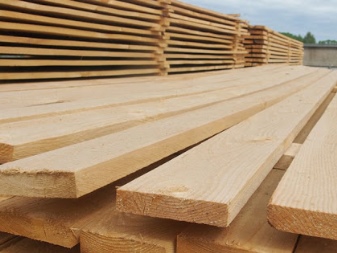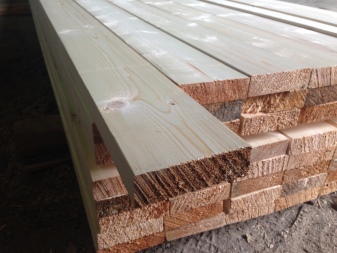What are 50 mm boards and how many are in 1 cube?

Edged and unedged boards 5 cm thick, like similar wood materials, require careful calculation before starting work. The number of pieces of unedged boards in 1 m3 is slightly more difficult to identify than the same amount of edged boards.


Peculiarities
A board with a thickness of 50 mm is a typical size of predominantly coniferous wood. Specifically, spruce, cedar or pine are used for its production. In rare cases, an oak or linden massif of this thickness is produced. At the end of the cut, the board is thoroughly sanded. As a result, the sawn board becomes not only planed, but also sanded.
Having trimmed and sanded a batch of boards, the sawmakers move the prepared timber into the forced drying chamber. Here, from the boards under the influence of temperature plus several tens of degrees Celsius, the boards lose the lion's share of the original water (by weight). After drying, they are considered relatively dry - no more than 17% moisture (according to GOST and industry standards).


"Fifty" withstands significant deformation effects - along with a bar or a log. Often there is no need to further adjust it to the existing conditions. It is used in the construction and decoration of walls, interfloor ceilings in wooden buildings and other works.
At the same time, it remains a relatively cheap and affordable material.


Species overview
Boards with a thickness of 50 mm - as well as other standard sizes similar to them - have similar specific characteristics.
Trim
Sawn edged board is characterized by constant dimensions in width and thickness. The next stage of its processing is planing, grinding of each of the copies that have just been produced on the sawmill. The last stage of processing - at the request of the client - is grooving, which consists in cutting elongated pins and grooves on the sides of each specimen.


Unedged
The unedged form of timber has edges, the width between which (from 10 to 25 cm) does not always remain the same. This feature is associated with the variable diameter and thickness of the trunk of a particular tree, which was cut down the day before. Since there are no ideal tree trunks, the thickness of the unedged material can fluctuate, for example, from 10 to 20 cm. In this case, before stacking and transporting the material to the woodworking base, it is recalculated according to the average diameter of the trunks packed in this stack.
The trunk of a sawn pine tree, which has grown to a thickness of up to 20 cm and has a minimum indicator of up to 10 cm, has an average value of about 15 cm. This subspecies of the product is used in the construction of office premises, including their decoration, - for example, sheds, utility rooms. An unedged board is always noticeably cheaper than an edged board - its processing does not provide for cutting off the side edges "for a blueprint", as is the case with its front and rear parts.


There is also no need to grind unedged products.
Dimensions (edit)
Most woodworking factories and sawmills immediately set 4 and 6 m lengths. The second value is the most common - the four-meter size is less versatile for most living quarters. If necessary, 6 m is cut into 4 and 2 m parts - the latter are often not enough on the market. The standard width and thickness of the "fifty" remain unchanged.


How many boards are in 1 cube?
The following parameters affect the number of boards in one cubic meter:
- length and width of products;
- the quality and degree of drying of timber;
- wood species.
Wet and drifting (downstream) wood contains a lot of water - up to half the weight of solid wood. Raw contains less water - no more than 45%. The equilibrium (natural) state makes you remember that there should be a maximum of a quarter of the weight of the piece of water. Finally, in dry wood, its amount (by weight) approaches 1/6. In addition, wood species also have a finite density - in terms of sufficiently dried wood.


How many pieces are in one cube of edged sawn boards, they will find out by doing the following:
- by multiplying the length, width and thickness of the product by each other (all values are converted into the number of meters, and the dimensions are often indicated in millimeters);
- dividing one cubic meter by the resulting volume, again converted to cubic meters.
The resulting number will be the number of products in a stack, occupying a volume of one cubic meter.
For example, a board measuring 6 * 0.25 * 0.05 m will take a volume equal to 0.075 m3. The number of such boards in one "cube" is 13 complete copies. To avoid sawing the 14th - in a row - three, you can order 3 cubic meters. m of wood in the form of "fifty". Then there will be exactly 40 of these boards in a stack of 3 m3. The multiple number of cubic meters eliminates the need to cut "extra" copies into pieces.


The second, no less important characteristic is to find out how many square meters of surface will be covered by the same boards. The initial data for the calculation are the length and width of a product of a given standard size. As an example - all the same copies 6 m long and 25 cm wide. One such board is the equivalent of 1.25 m2, for example, a floor lined in a conference room or on a podium. For the correctness of the calculation, respectively, 40 such boards contained in 3 cubic meters of wood material of the same standard size is equivalent to 50 square meters of the same floor being erected in the same room.
Consequently, there are 16.66 square meters of the lined base per 1 m3. "Non-circular" values must be borne in mind - several versions of the calculation allows you to avoid such a nuisance, sometimes significantly reducing the cost of finishing or building an object.


To count the number of unedged wood specimens, almost the same method is used, but taking into account the averaging of the width of the board due to the unevenness of the tree that has just been cut into layers. Unlike counting the number of edged boards, for unedged boards such an estimate will be only approximate. For example, an unedged board 5 cm thick, having a variable width of one copy of 20-30 cm, will take almost the same volume - 3 m3 for 40 pieces.


What nails to nail?
Regardless of what fasteners you use - nails or self-tapping screws, the board at each fixation point on beams or logs must be drilled with a drill, the diameter of which is approximately equal to the diameter of the nail or self-tapping screw. For example, when the diameter of the working part of the nail is 5 millimeters, then the drill for pre-drilling must be taken one millimeter less - in this case it is 4 mm.
The fact is that if you nail the board with a nail without preliminary drilling, it will crack along - in the vicinity of the nail being driven. The resulting crack will take on uneven outlines, which will completely ruin the appearance of the board. A self-tapping screw of a similar diameter will give a similar effect - its helical groove will spread the wood material in both directions.


The length of the nail (or self-tapping screw) is mainly determined by the thickness of the base (beam). For example, 8 cm is added to 5 centimeters, when the beam is a beam with a cross-sectional side of 10 cm (or a log with the same diameter acts as a supporting base). The final length of a nail or a screw in this case is 13 cm. The purpose of a careful selection of a nail (or self-tapping screw), as well as a drilling drill, is not to destroy the base on which the "fifties" are laid in a row.
If the logs are laid on a rough (concrete) floor in a room or in another room, at first they are similarly attached with self-tapping screws or anchor bolts on concrete, having previously drilled holes for them. Further, having fixed these beams, they check that the countersunk heads of the self-tapping screws (or bolts) do not protrude anywhere. The subfloor and logs are covered with an antiseptic impregnation. Then the boards themselves are laid on them. The resulting floor is covered with fire-resistant impregnation and painted over with varnish or paint.


The correct calculation of the project allows you to avoid annoying mistakes that entail unplanned costs. The latter, in turn, delay the delivery of the object to the current or new owner.
What are 50 mm boards and how many are in 1 cube, see the video below.













The comment was sent successfully.